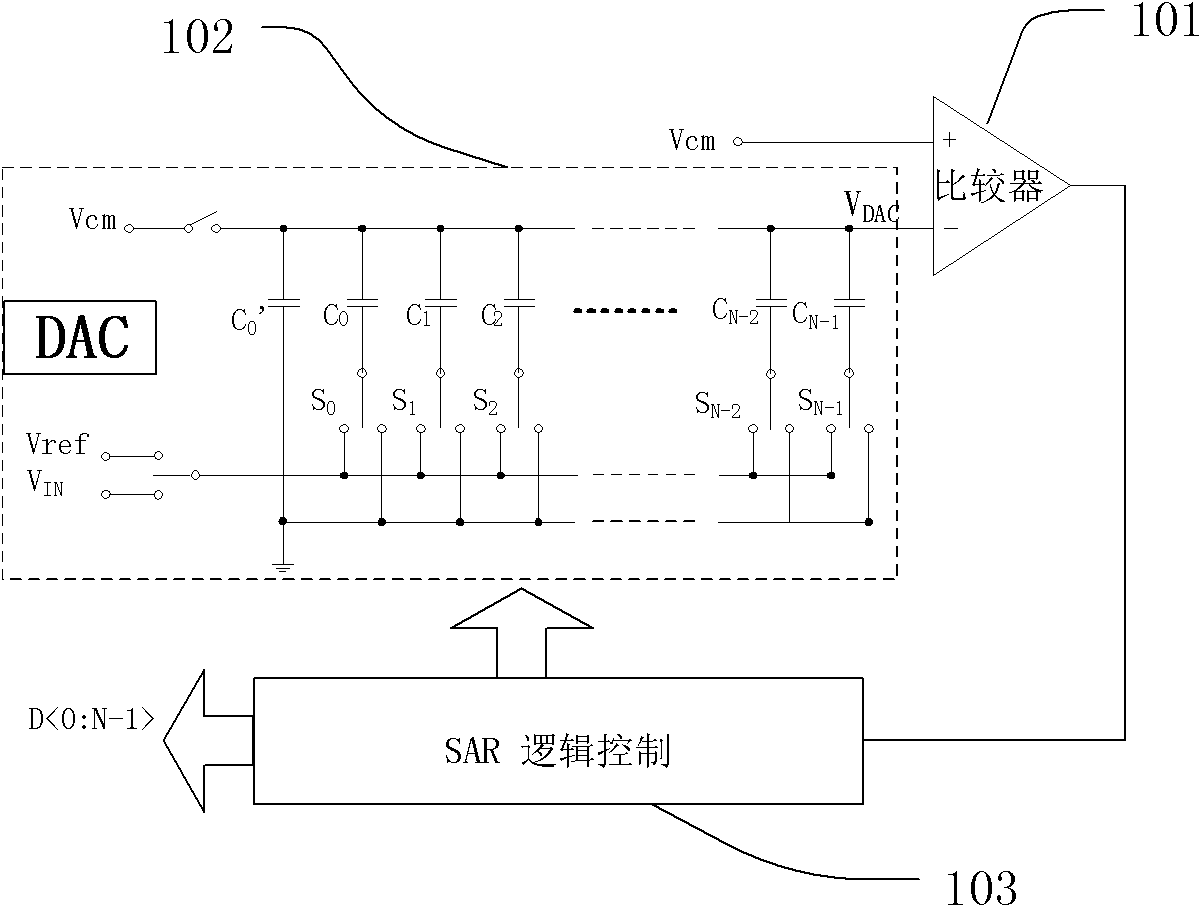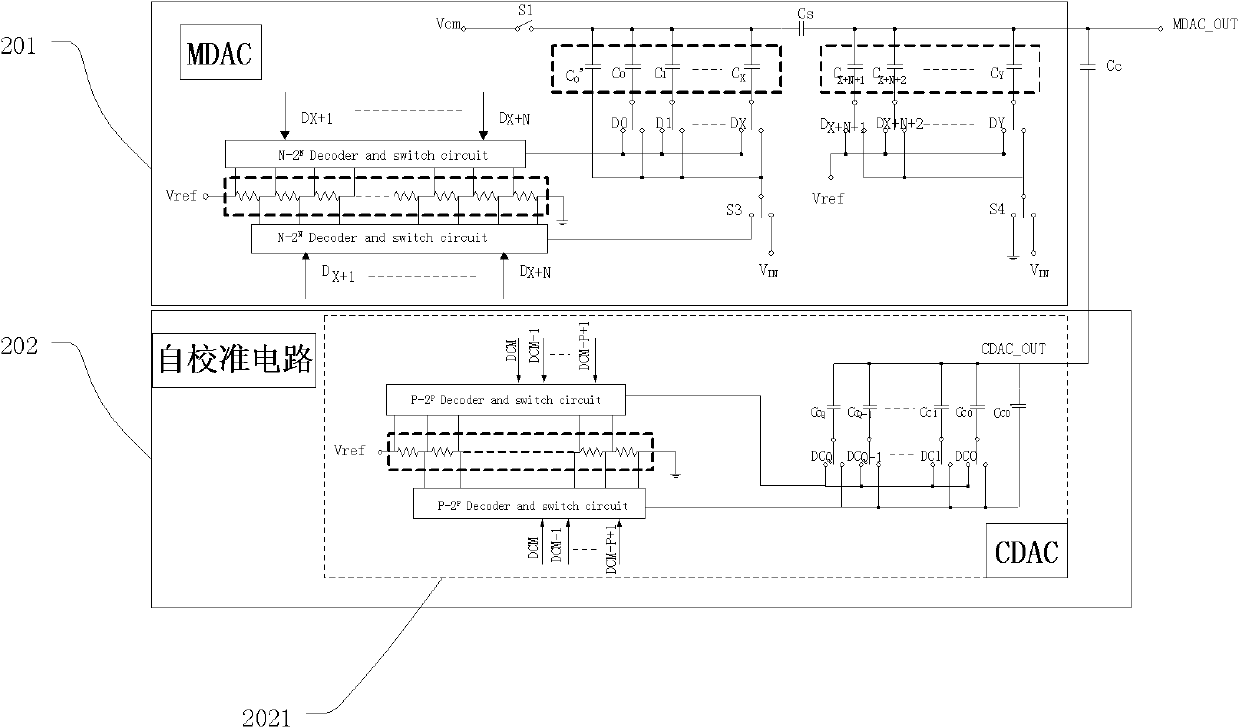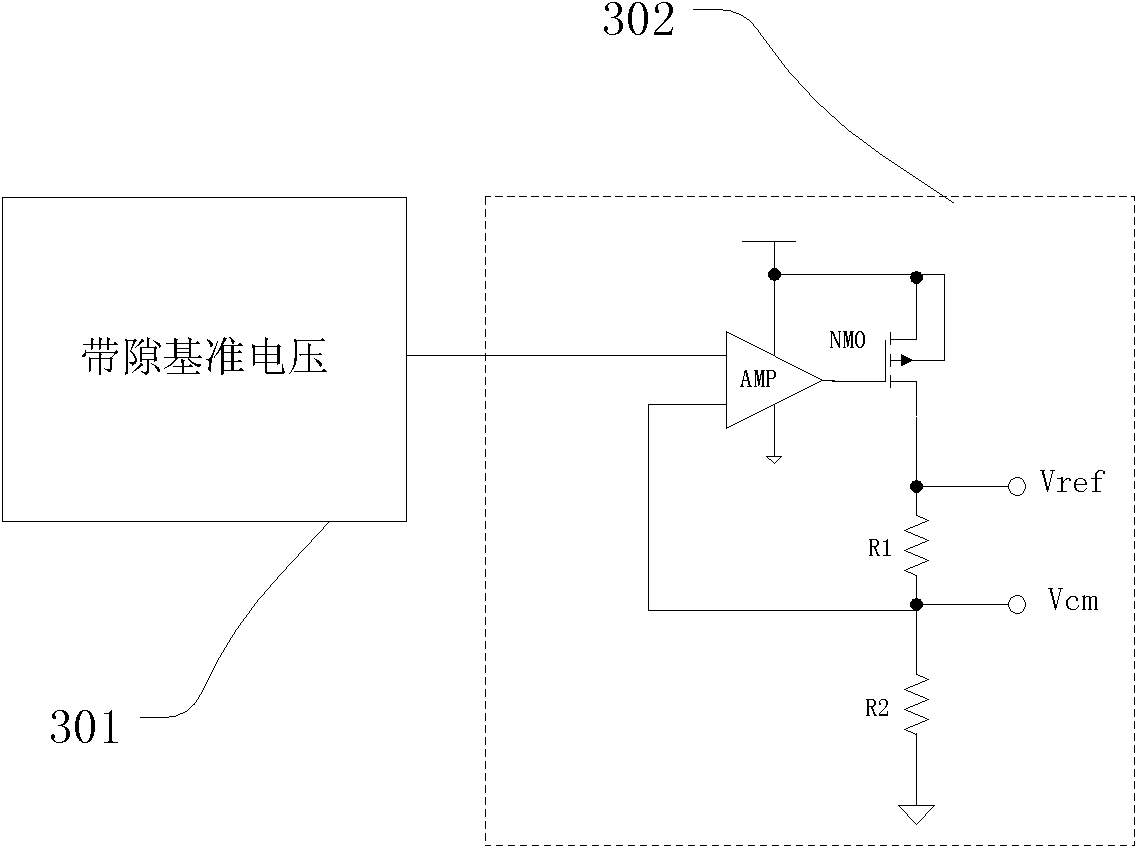Resistance-string multiplexing circuit structure of SAR ADC (successive approximation analog to digital converter)
A digital-to-analog converter and successive approximation technology, applied in the directions of analog/digital conversion, analog/digital conversion calibration/test, code conversion, etc., can solve the problems of chip area consumption and power consumption
- Summary
- Abstract
- Description
- Claims
- Application Information
AI Technical Summary
Problems solved by technology
Method used
Image
Examples
Embodiment Construction
[0019] Below in conjunction with accompanying drawing, provide the specific implementation example of the present invention. It should be noted that: the parameters in the implementation examples do not affect the generality of the present invention. Assuming that the SAR ADC in the example has 12-bit resolution, the main digital-to-analog converter MDAC has a capacitive 5-bit high, the middle 3-bit is resistive, and the lowest 4-bit is capacitive; the self-calibrating digital-to-analog converter CDAC has 9 bits The resolution is composed of high 4-bit resistive type and low 5-bit capacitive type.
[0020] Figure 5 It is a structural diagram of a successive approximation digital-to-analog converter with self-calibration function, including six parts: a main digital-to-analog converter (MDAC) 501; a 12-bit successive approximation register (12-bit SAR) 502; a comparator 503; a Logic control module 504; a self-calibration circuit 505; a reference voltage generation circuit 50...
PUM
 Login to View More
Login to View More Abstract
Description
Claims
Application Information
 Login to View More
Login to View More - R&D
- Intellectual Property
- Life Sciences
- Materials
- Tech Scout
- Unparalleled Data Quality
- Higher Quality Content
- 60% Fewer Hallucinations
Browse by: Latest US Patents, China's latest patents, Technical Efficacy Thesaurus, Application Domain, Technology Topic, Popular Technical Reports.
© 2025 PatSnap. All rights reserved.Legal|Privacy policy|Modern Slavery Act Transparency Statement|Sitemap|About US| Contact US: help@patsnap.com



